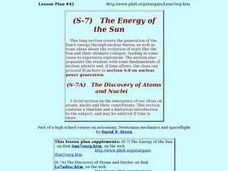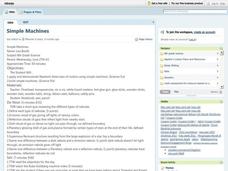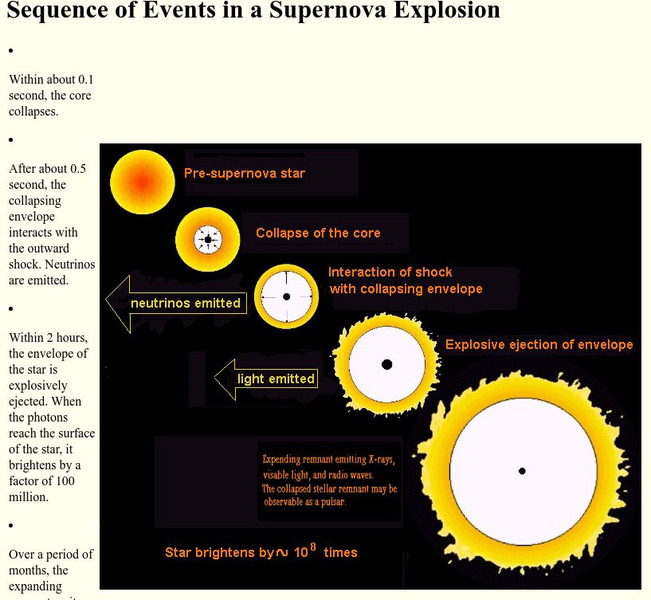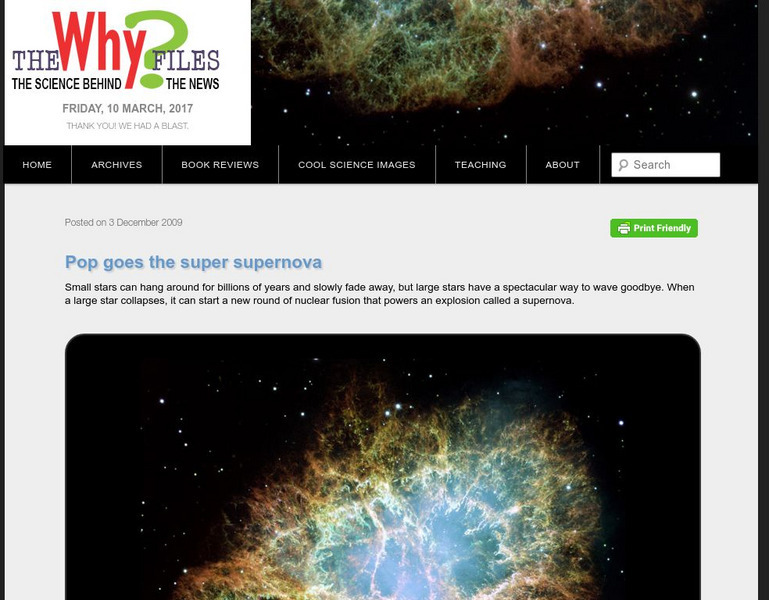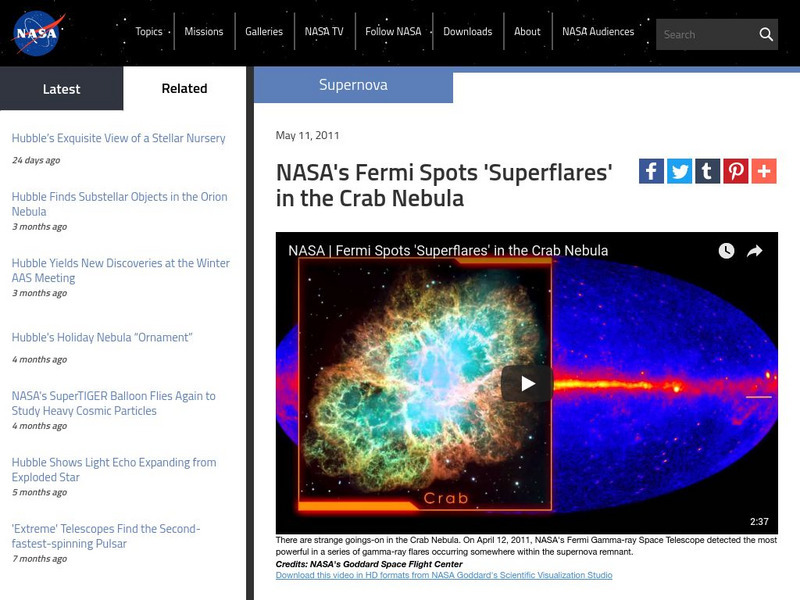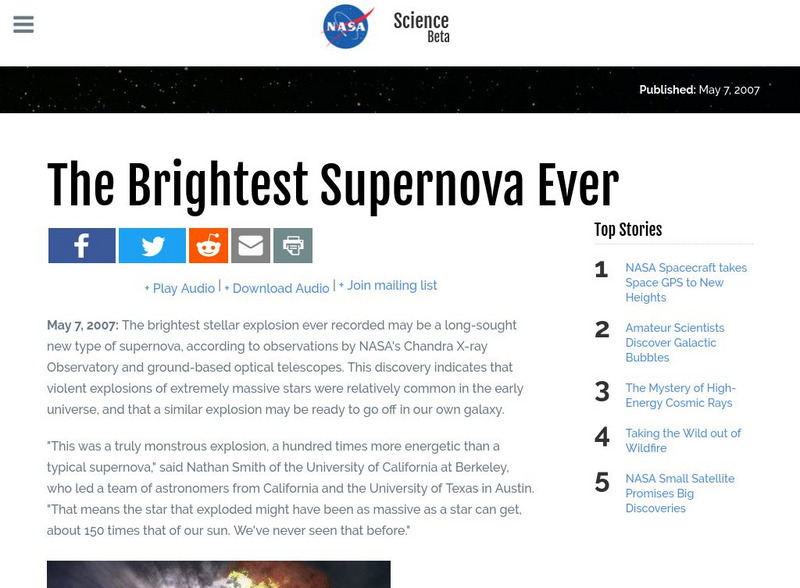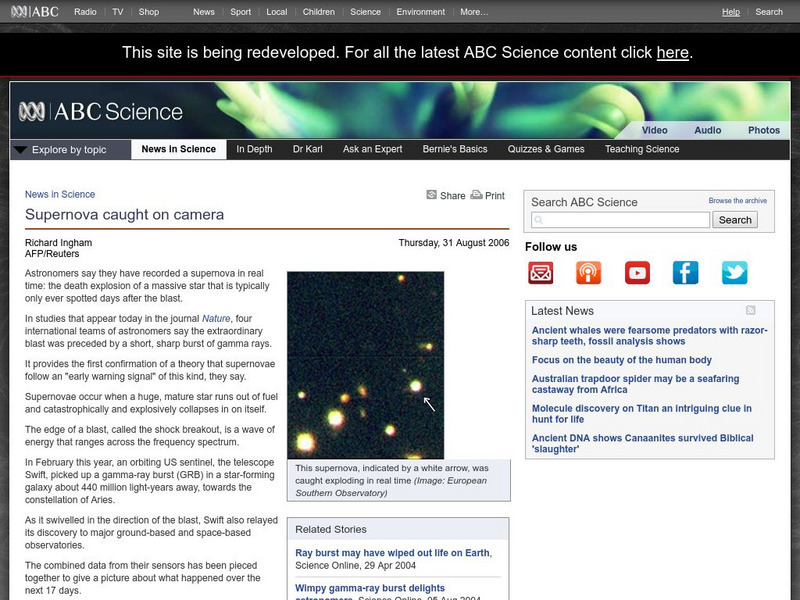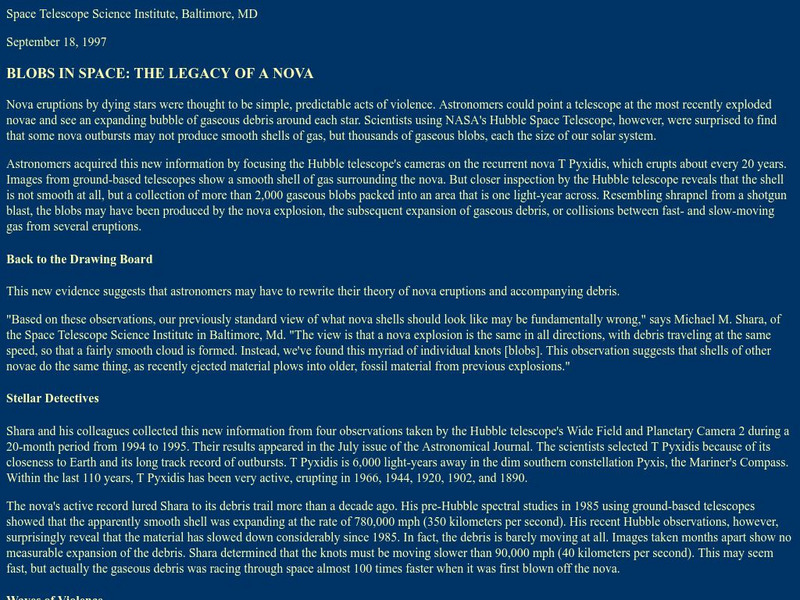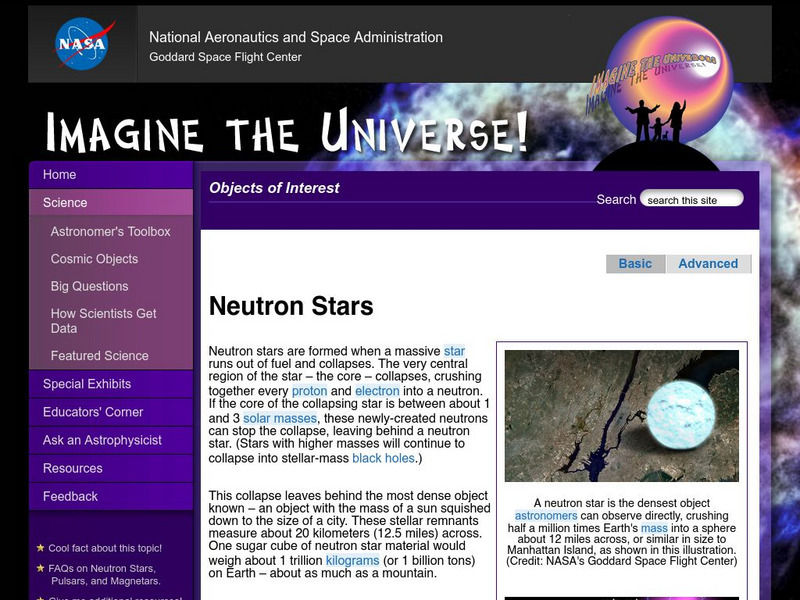Las Cumbres Observatory
Measure the Age of Ancient Cosmic Explosions
Supernova explosions mark the end of a star's life. Guide the class through an investigation that uses data to calculate the age of a supernova remnant. Using provided data and online software, they analyze data to determine the radius...
Curated OER
X-ray Spectroscopy and the Chemistry of Supernova Remnants
This link takes you to a comprehensive unit that delves into emission spectra and supernovas. There are four parts: How and where elements are created, electromagnetic radiation, spectroscopy, and the newest technology for studying our...
Curated OER
Chandra Studies and Expanding Supernova Shell
In this supernova learning exercise, students read about the expanding supernova shell that was discovered by the Chandra X-ray Observatory. Students solve two problems including finding the scale of the given images and determining the...
Curated OER
Measuring Speed in the Universe
In this measuring speed in the universe worksheet, students use photographs of 3 astronomical phenomena including supernova explosions, coronal mass ejections and solar flare shock waves to find how fast they move. The photographs show...
Curated OER
Space: Supernova
Students explore the gigantic explosions in the universe that are produced by dying stars and cause new star formations.
American Museum of Natural History
Journey to the Stars
Fifteen detailed pictures and informative captions delve deep into the exploration of stars—their life cycle and importance in the universe.
Research Parent
Universe Cards
A 9-page packet comes with 24 cards that have pictures and informational text about each object in the universe. From nebulae to dwarf planets, objects we see—or don't see—are represented in the cards through pictures and words.
Curated OER
Pulsars and Simple Equations
In this pulsars worksheet, students read about the spin rate of pulsars and they are given two equations that predict the spin rate in the future of these two pulsars. Students solve 6 problems related to the given equations and...
Curated OER
The Energy of the Sun
Students study energy generation by the Sun, which involves atoms and nuclei.
Curated OER
Integrating Space Science-Our Changing Universe
In this universe worksheet, students read about the big bang theory and the evolution of the stars from the elements. Students answer four critical thinking questions about the beginnings of our universe.
Curated OER
Simple Machines
Students engage in a lesson that is concerned with the concept of a simple machine and uses the law of motion to justify why they operate. Students explore the laws by constructing some simple machines to illustrate the concepts.
Curated OER
Timing An X-ray Pulsar
Students use X-ray data to identify an object as a rotating neutron star, and determine its period of rotation. They use XTE observations of the Crab Pulsar to determine the period of the light intensity, interpret this period as the...
Cornell University
Cornell University: Astronomy: Sequence of Events in a Supernova Explosion
The complex sequence of events in a supernova explosion are explained and illustrated.
PBS
Pbs: Nova Online: Birth of a Supernova
PBS site explores the birth of a Supernova and explores its common types.
European Space Agency
European Space Agency: Esa Kids: Our Universe: Supernovas
A basic overview of supernovas. Links to more information about starts, planets and other objects in our solar system and galaxy are included.
University of Wisconsin
The Why Files: Pop Goes the Super Supernova
Small stars can hang around for billions of years and slowly fade away, but large stars have a spectacular way to wave goodbye. When a large star collapses, it can start a new round of nuclear fusion that powers an explosion called a...
Georgia State University
Georgia State University: Hyper Physics: Supernovae
This site from Georgia State Department Astronomy & Physics provides information on the Supernovae. "A supernova is an explosion of a massive supergiant star." Find out much more at this site.
NASA
Nasa: Crab Nebula Supernova Remnant
The Crab Nebula Supernova Remnant image is part of a series of photographs taken from the Spitzer Space Telescope. The picture is accompanied by a textual overview of a nebula left over from a supernova explosion. Specific attention is...
NASA
Nasa Science: The Brightest Supernova Ever Seen
Article explores the supernova of a star that is possibly "150 times more massive than our Sun." The primary observations of the explosion were accomplished through the Chandra X-ray Observatory. (May 7, 2007)
NASA
Heasarc: Supernova
Describes the most energetic explosive event in outer space: the supernova. Includes animation of a supernova.
Curated OER
Sequence of Events in a Supernova Explosion
The complex sequence of events in a supernova explosion are explained and illustrated.
Australian Broadcasting Corporation
Australian Broadcasting Corporation: News in Science: Supernova Caught on Camera
From ABC News in Science, Richard Ingham's article explores information relating to footage of the explosion of a star. The article also deals with what happens in the aftermath of a supernova.
Other
Astronet: Blobs in Space: The Legacy of a Nova
The expansion and explosion of a star is described at it goes through its nova phase. Current theories are discussed.
NASA
Nasa: Imagine the Universe: Neutron Stars and Pulsars
Discover what neutron stars and pulsars are and view pictures of them. Includes links to additional resources and lesson plans.










